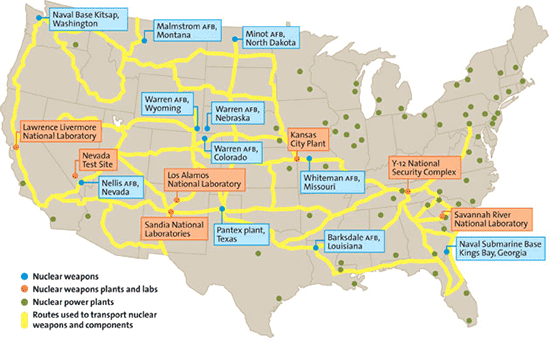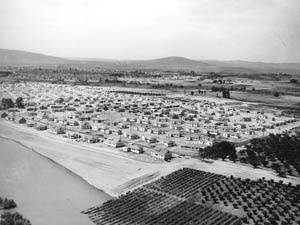Many know the story of the atomic bomb and the Cold War nuclear arms race that occurred between the US and the former USSR’s governments at the end of WWII. Less well-known is the incredible effort and sacrifice made by average US citizens in the effort to protect our country.
US Nuclear Weapons Production

The U.S. nuclear weapons program began as early as 1939 when Enrico Fermi and Albert Einstein brought the idea of a Nazi super weapon to President Roosevelt’s attention. As WWII progressed, the urgency to develop an atomic bomb intensified and eventually produced the bombs that were dropped over Hiroshima and Nagasaki.
The US nuclear program has employed nearly 700,000 workers at over 380 Department of Energy sites across the country. Major sites in Oak Ridge, TN and Hanford, WA, alone spanned thousands of miles and involved enormous, rapid construction projects.

“Atomic Cities” were literally created overnight as thousands of workers and their families flocked to new job opportunities and a chance to defend our nation. Positions included everything from uranium miners and transporters to astrophysicists and bomb testers.
The incredible success of the U.S. nuclear weapons program stands as a testament to American ingenuity and patriotism. However, it was not without sacrifice.
Exposure, Sick Workers & EEOICPA
Of the nearly 700,000 employees, contractors or sub-contractors of the Department of Energy, many became sick as a result of the hazardous work environment associated with nuclear weapon production. Their sacrifice is appropriately described by President Bill Clinton in the following Executive Order:
“Thousands of these courageous Americans…paid a high price for their service, developing disabling or fatal illnesses as a result of exposure to beryllium, ionizing radiation, and other hazards unique to nuclear weapons production and testing. Too often, these workers were poorly protected or not properly made aware of the dangers when working with radiation and chemicals specific to nuclear weapon production. As a result, many developed work related illnesses; sometimes even well after their employment.”
The Energy Employees Occupational Illness Compensation Program Act or EEOICPA was signed into law by President Bill Clinton in 2000. Despite the lengthy name, the act was created as a direct way to compensate workers who became sick from jobs related to the production of nuclear weapons.
The program has been revised since its inception; however, its main objective to compensate sick nuclear workers remains the same.
For living workers, benefits can include tax-free compensation up to $400,000 and medical coverage. There is also compensation and medical bill relief available for certain survivors of a former nuclear worker.
Learn more about EEOICPA eligibility

